
A Stolperstein is a sett-size, ten-centimetre (3.9 in) concrete cube bearing a brass plate inscribed with the name and life dates of victims of Nazi extermination or persecution.

Gunter Demnig is a German artist. He is best known for his Stolperstein memorials to the victims of Nazi persecution, including Jews, homosexuals, Romani and the disabled. The project places engraved brass stones in front of a former residence for a Holocaust victim who was deported and killed by Nazi Germany, began in Germany and has since spread, with more than 60,000 stones placed across 21 countries in Europe.

The Stolpersteine in the Lake Constance district lists all Stolpersteine that have been collocated in Friedrichshafen and Überlingen in the Bodenseekreis in the very South of Germany. Stolpersteine is the German name for stumbling blocks collocated all over Europe by German artist Gunter Demnig. They remember the fate of the Nazi victims being murdered, deported, exiled or driven to suicide.

The Stolpersteine in Prague-Vršovice and Modřany lists the Stolpersteine in the town quarters Vršovice and Modřany. Stolpersteine is the German name for stumbling blocks collocated all over Europe by German artist Gunter Demnig. They remember the fate of the Nazi victims being murdered, deported, exiled or driven to suicide.

The Stolpersteine in the Královéhradecký kraj lists the Stolpersteine in the region Královéhradecký kraj in the north-east of Bohemia. Stolpersteine is the German name for stumbling blocks collocated all over Europe by German artist Gunter Demnig. They remember the fate of the Nazi victims being murdered, deported, exiled or driven to suicide.

The Stolpersteine in Prague-Malá Strana lists the Stolpersteine in the town quarter Malá Strana of Prague. Stolpersteine is the German name for stumbling blocks collocated all over Europe by German artist Gunter Demnig. They remember the fate of the Nazi victims being murdered, deported, exiled or driven to suicide.

The Stolpersteine in the Jihočeský kraj lists the Stolpersteine in the Czech region Jihočeský kraj. Stolpersteine is the German name for stumbling blocks collocated all over Europe by German artist Gunter Demnig. They help us remember the fate of the Nazi victims being murdered, deported, exiled or driven to suicide.

The Stolpersteine in Prague-Libeň lists the Stolpersteine in the Cadastral area and district Libeň of Prague. The district has been split off. Since 2002 it belongs mainly to Praha 8, but parts of it are now in Praha 7 and Praha 9. Stolpersteine is the German name for stumbling blocks collocated all over Europe by German artist Gunter Demnig. They remember the fate of the Nazi victims being murdered, deported, exiled or driven to suicide.

The Stolpersteine in Prague-Nusle lists the Stolpersteine in the district Nusle of Prague. The district has been split off. Since 2002 it belongs mainly to Praha 4, but parts of it are now in Praha 2. Stolpersteine is the German name for stumbling blocks collocated all over Europe by German artist Gunter Demnig. They remember the fate of the Nazi victims being murdered, deported, exiled or driven to suicide.

The Stolpersteine in Ratenice lists the Stolpersteine in Ratenice in the Central Bohemian Region, the central part of Bohemia. Stolpersteine is the German name for stumbling blocks collocated all over Europe by German artist Gunter Demnig. They remember the fate of the Nazi victims being murdered, deported, exiled or driven to suicide.
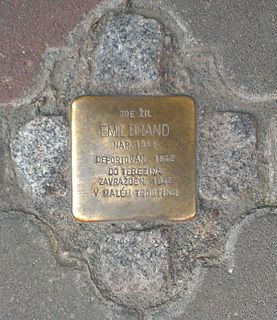
The Stolpersteine in Zlín Region lists the Stolpersteine in the Zlín Region in the central-eastern part of Moravia. Stolpersteine is the German name for stumbling blocks collocated all over Europe by German artist Gunter Demnig. They remember the fate of the Nazi victims being murdered, deported, exiled or driven to suicide.
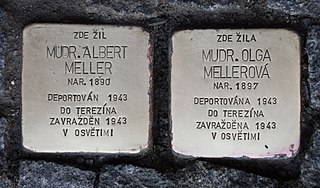
The Stolpersteine in the Pardubický lists the Stolpersteine in the Pardubice Region in the east of Bohemia. Stolpersteine is the German name for stumbling blocks collocated all over Europe by German artist Gunter Demnig. They remember the fate of the Nazi victims being murdered, deported, exiled or driven to suicide.

The Stolpersteine in Prague-Smíchov lists the Stolpersteine in the district Smíchov of Prague. Since 2002, the district belongs to Praha 5. Stolpersteine is the German name for stumbling blocks collocated all over Europe by German artist Gunter Demnig. They remember the fate of the Nazi victims being murdered, deported, exiled or driven to suicide.
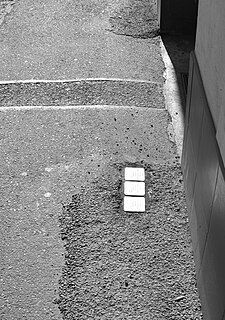
The Stolpersteine in Prague-Michle lists the Stolpersteine in cadastral area Michle of Prague. Since 2002, the district belongs to Praha 4. Stolpersteine is the German name for stumbling blocks collocated all over Europe by German artist Gunter Demnig. They remember the fate of the Nazi victims being murdered, deported, exiled or driven to suicide.

The Stolpersteine in Prague-Podolí lists the Stolpersteine in the district Podolí of Prague. Since 2002, the district belongs to Praha 4. Stolpersteine is the German name for stumbling blocks collocated all over Europe by German artist Gunter Demnig. They remember the fate of the Nazi victims being murdered, deported, exiled or driven to suicide.
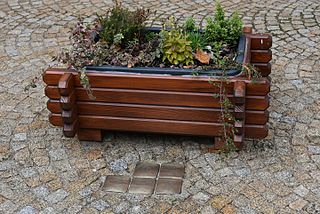
The Stolpersteine in Lomnice u Tišnova lists the Stolpersteine in the town Lomnice in the South Moravian Region. Stolpersteine is the German name for stumbling blocks collocated all over Europe by German artist Gunter Demnig. They remember the fate of the Nazi victims being murdered, deported, exiled or driven to suicide.

The Stolpersteine in Mikulov, Slavkov u Brna and Znojmo lists the Stolpersteine in three towns of the South Moravian Region. Stolpersteine is the German name for stumbling blocks collocated all over Europe by German artist Gunter Demnig. They remember the fate of the Nazi victims being murdered, deported, exiled or driven to suicide.

The Stolpersteine in Tišnov lists the Stolpersteine in the town Tišnov in the South Moravian Region. Stolpersteine is the German name for stumbling blocks collocated all over Europe by German artist Gunter Demnig. They remember the fate of the Nazi victims being murdered, deported, exiled or driven to suicide.

The Stolpersteine in Milovice nad Labem lists the Stolpersteine in the town of Milovice nad Labem in the Central Bohemian Region. Stolpersteine is the German name for stumbling blocks collocated all over Europe by German artist Gunter Demnig. They remember the fate of the Nazi victims being murdered, deported, exiled or driven to suicide.
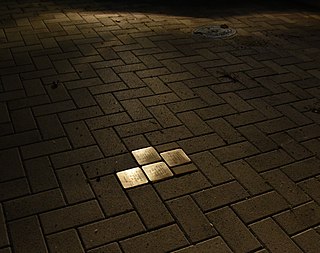
Stolpersteine is the German name for stumbling blocks collocated all over Europe by German artist Gunter Demnig. They remember the fate of the victims of Nazi Germany being murdered, deported, exiled or driven to suicide. The first Stolpersteine of the Trnavský kraj, the Trnava Region of present-day Slovakia, were collocated in August 2016.























